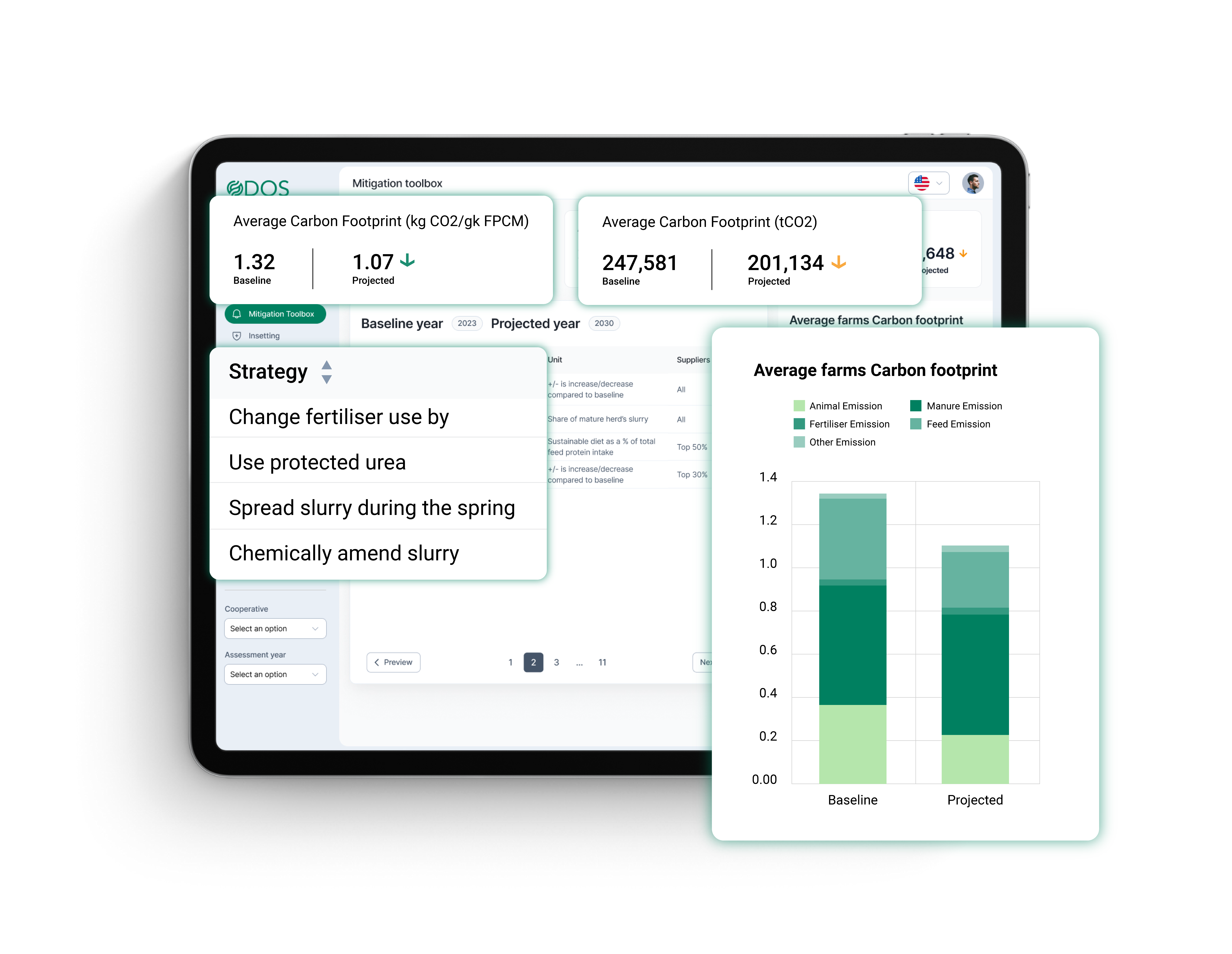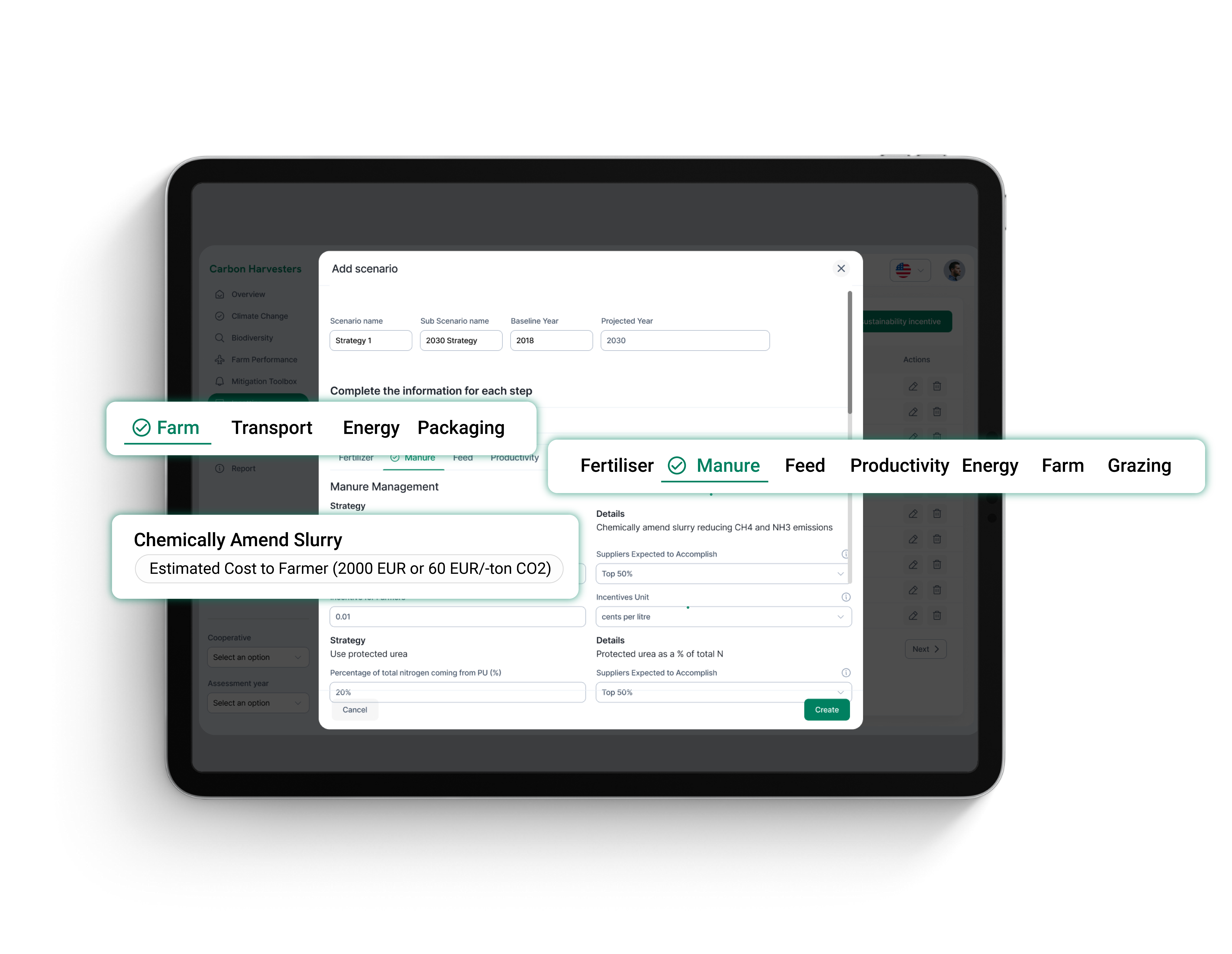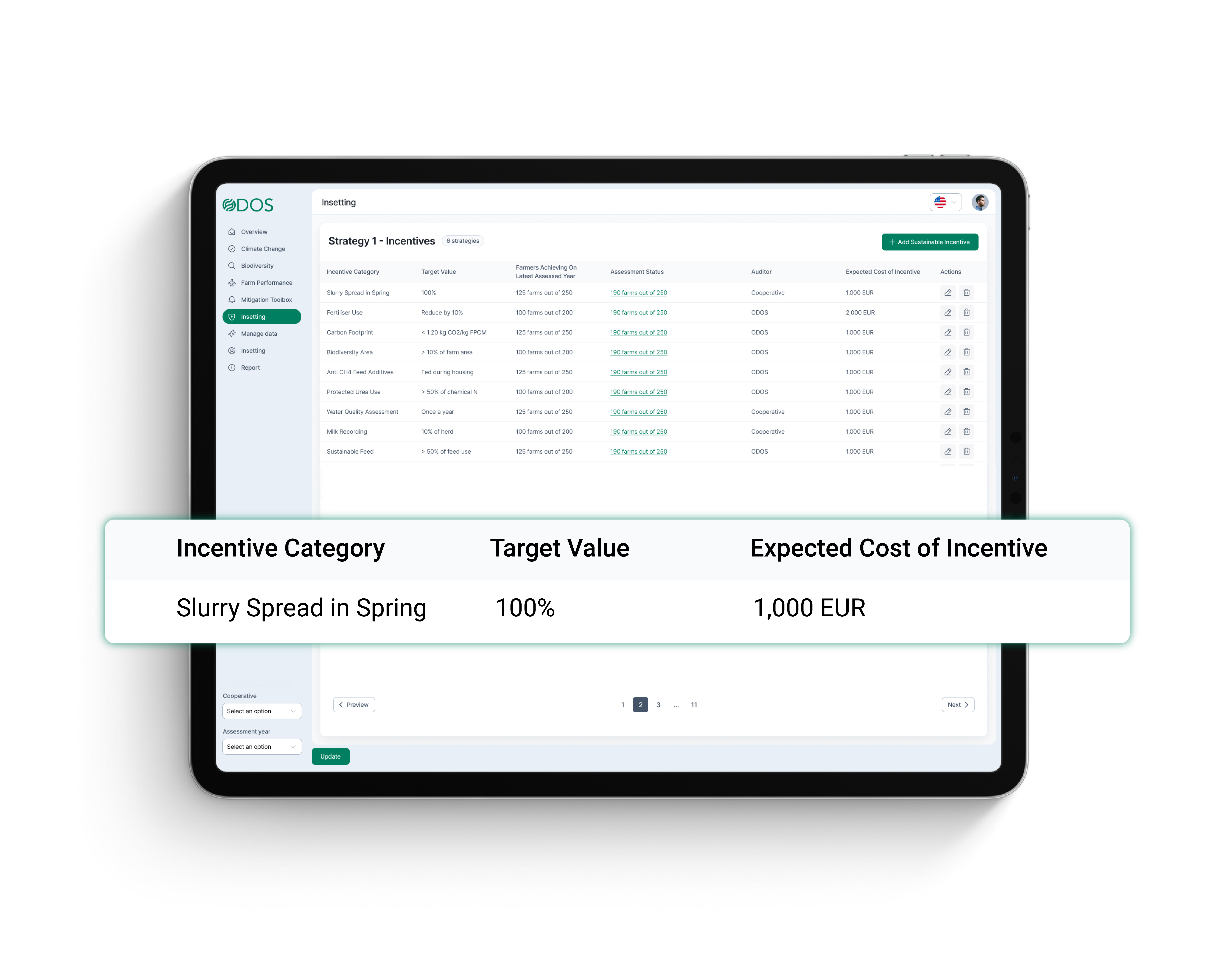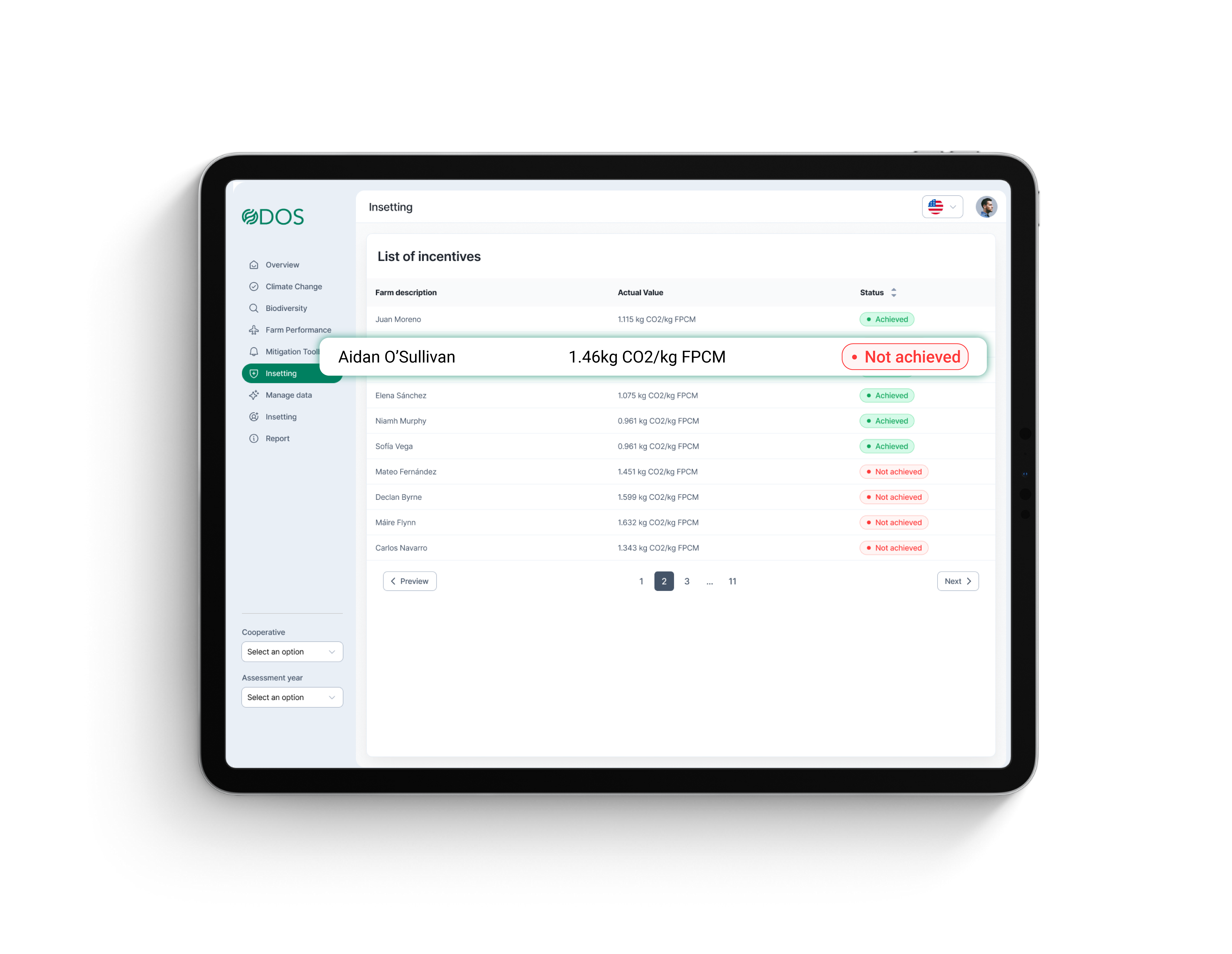Reduce What Your Measure
Turn insights into action with proven mitigation and insetting strategies
Knowing your environmental footprint is just the beginning—our Mitigation Toolbox provides the strategies you need to take action.
From operational efficiencies to supply chain decarbonization and insetting, we help you implement meaningful change that drives sustainability and business value.

A Comprehensive Mitigation Toolbox
Farm-level
Mitigation strategies for on-farm activities – project the results of the strategies put in place.

For All Scopes
Plan and project the effect of mitigation strategies for all scopes of your supply chain.

Understand Cost of Incentives
After projecting the effects of your strategies, get down to the real cost of incentivizing your supply chain.

Track Implementation
Track and report on sustainability incentives by verifying farmer actions using real data.

Ready to make sustainability actionable?
Talk to our sustainability and mitigation experts on how you can start your journey.
Frequently Asked Questions
A carbon mitigation toolbox is a suite of strategies, technologies, and frameworks designed to help businesses reduce their greenhouse gas (GHG) emissions. It provides actionable solutions such as energy efficiency improvements, carbon insetting, supply chain decarbonization, and verified offset projects to support companies on their journey to Net Zero.
- Carbon insetting refers to reducing emissions within your own value chain, such as investing in regenerative agriculture, sustainable supply chain improvements, or renewable energy adoption.
- Carbon offsetting involves funding external projects, like reforestation or carbon capture, to compensate for emissions that cannot be directly reduced.
Both play a role in corporate sustainability strategies, but insetting is often preferred as it delivers direct business and environmental benefits.
Scope 3 emissions, which come from the supply chain and product lifecycle, can be reduced through supplier engagement, sustainable procurement, low-carbon logistics, and circular economy strategies. Our Mitigation Toolbox provides industry-specific approaches to help companies drive down Scope 3 emissions while aligning with global sustainability reporting frameworks.
Many regulations, such as the Corporate Sustainability Reporting Directive (CSRD) and Science-Based Targets initiative (SBTi), require companies to demonstrate credible emission reduction efforts. Our Mitigation Toolbox ensures your strategies align with these frameworks, making compliance seamless while positioning your company as a leader in sustainability.
Any industry with direct or supply chain emissions can benefit from carbon mitigation, including manufacturing, agriculture, food & beverage, retail, logistics, and energy sectors. Our solutions are tailored to your industry’s unique footprint, helping businesses achieve impactful and measurable reductions.
The timeline for emission reductions varies based on the strategies implemented. Energy efficiency improvements can yield quick results in weeks or months, while supply chain and carbon insetting projects may take several months to years. Our Mitigation Toolbox helps you set realistic goals and track progress to ensure long-term success.
